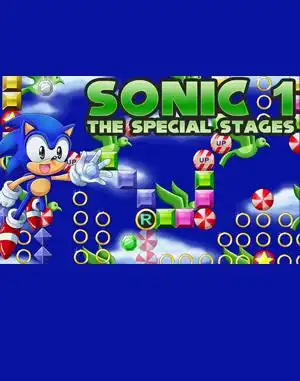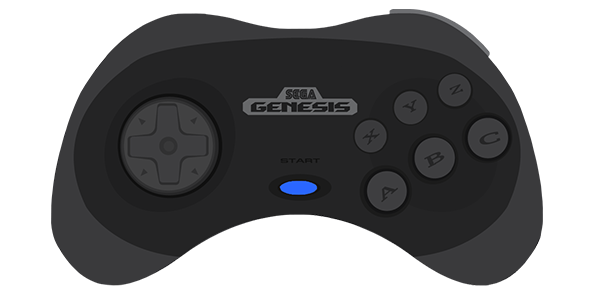Ah, the Sega Genesis. Home to blast processing and the iconic blue blur. When Sonic the Hedgehog first graced the console, it was a revelation of speed and attitude. While Green Hill Zone's checkerboard hills are etched into our collective memory, there's another part of the original game that stands out, perhaps less fondly for some: Sonic 1: The Special Stages Sega Genesis had to offer.
These weren't your typical bonus rounds; they were a unique, sometimes frustrating, and utterly psychedelic experience necessary for unlocking Sonic's true power. Let's take a spin through these infamous mazes.
What Exactly Were the Sonic 1 Special Stages?
Unlike the half-pipe races of Sonic 2 or the sphere-collecting grids of Sonic 3 & Knuckles, the special stages in the original Sonic the Hedgehog were... different.
Imagine a giant, rotating, checkered maze floating in a void. That was the setting. Sonic would constantly tumble forward, and your job was to steer him left and right to navigate the labyrinth. The goal? To reach and grab the coveted Chaos Emerald hidden within.
Visually, they were a trip. Bright, clashing colors, a constantly spinning perspective, and simple 3D-like geometry that felt cutting edge at the time, even if it made you slightly nauseous.
How to Access These Psychedelic Mazes
Getting into a special stage in Sonic 1 wasn't guaranteed. You couldn't just find them like hidden levels. Instead, you had to earn your way in:
- Collect 50 or more rings by the end of Act 1 or Act 2 of any zone.
- Jump into the giant ring that appeared once you met the ring requirement.
That's right, you had to finish the main part of the level and have a significant amount of rings. Lose your rings before hitting the goal post, and no special stage for you! Act 3 levels, typically boss stages, did not have a giant ring, so your chances were limited to the first two acts of each zone.
Navigating the Maze: The Goal and the Gimmick
Once inside, the challenge began. Sonic would roll along the paths of the rotating maze. Your simple left/right controls were your only tool to steer him.
- Collect Rings: Scattered throughout the maze were rings. Collecting a certain number of rings was often key to opening up the path to the Chaos Emerald.
- Avoid Goal Blocks: These blocks, marked with stars, were the stage's primary hazard. Hitting one would immediately kick you out of the special stage, sending you back to the zone map, ringless and emerald-less from that attempt.
- Reach the Emerald: The ultimate goal was to find the central area where the Chaos Emerald was held and simply touch it.
The tricky part was the momentum and the camera. Sonic constantly rolled, and turning felt a bit clunky. The maze spun independently, making judging your path and avoiding those dreaded goal blocks a genuine challenge.
The Infamous Difficulty and Why They're So... Odd
Let's be honest: the Sonic 1 special stages aren't everyone's favorite. Compared to the smooth, intuitive controls of the Sonic 2 half-pipe or even the patterned movement needed for Sonic 3's spheres, the original stages felt a bit... janky.
Many players found them confusing and frustrating. The controls weren't precise, hitting a goal block felt cheap, and sometimes it wasn't immediately obvious which path you were supposed to take. They lacked the clear objective and satisfying flow of later special stages in the series.
Why were they so different? It was the first game! Sega and Sonic Team were still figuring things out. They wanted a unique bonus experience that utilized the Genesis's capabilities for pseudo-3D effects, and this rotating maze concept was their initial attempt. It was ambitious, but perhaps not perfectly executed from a pure gameplay perspective.
Are They Worth It?
Despite the frustration, tackling the Sonic 1: The Special Stages Sega Genesis had was crucial if you wanted the full experience. Collecting all six Chaos Emeralds was the only way to see the game's true ending, where Sonic actually keeps the emeralds. If you finished the game without them, you'd get a less satisfying conclusion.
So, yes, they were absolutely worth the struggle if you were aiming for 100% completion and the best ending back in the day. They were a gatekeeper to Super Sonic's eventual introduction in Sonic 2 and the series' overarching narrative.
Conclusion
The special stages in the original Sonic the Hedgehog on the Sega Genesis hold a unique, if sometimes polarizing, place in retro gaming history. They were a bold, experimental attempt at a bonus level, necessary for collecting the vital Chaos Emeralds needed for the true ending. While they might not have been as refined or beloved as the special stages that came after, they were an unforgettable part of the Sonic 1 experience – a dizzying, challenging trip through a rotating maze that tested patience as much as reflexes. They perfectly capture that early 90s era of game design experimentation on powerful new hardware.
FAQ
Q: How many Special Stages are in Sonic 1? A: There are six unique Special Stages, each containing one of the six Chaos Emeralds.
Q: Do I need to beat the Special Stages to finish Sonic 1? A: No, you can finish the game without collecting any Chaos Emeralds. However, you need to collect all six to see the game's true ending.
Q: How do I get into a Special Stage? A: Finish Act 1 or Act 2 of any zone with 50 or more rings and jump into the giant ring that appears.
Q: Are the Special Stages in Sonic 1 the same as in Sonic 2 or 3? A: No, they are completely different. Sonic 2 has a 3D half-pipe stage, and Sonic 3 & Knuckles has a sphere-collecting grid stage.


